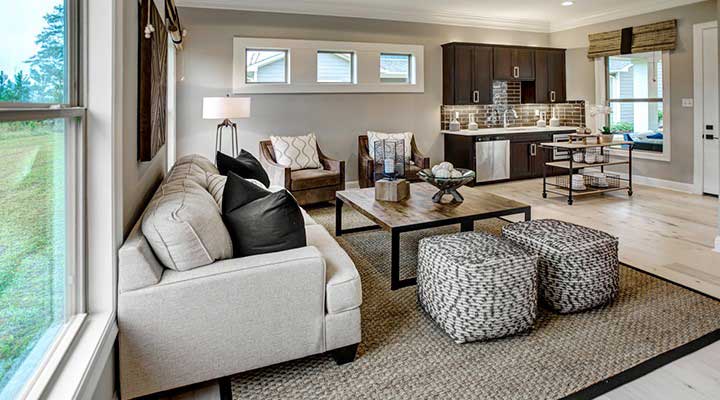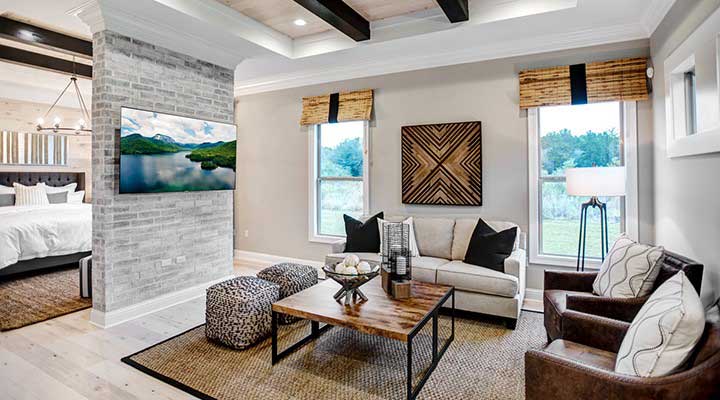
How to Make Multigenerational Homes Work
Mar 31, 2023 / Liset Marquez
Renee Lorraine of Southern California has learned firsthand how to make her multigenerational home work—with five people all tucked into a three-bedroom home.
It all started a few years back, when she moved in with her 89-year-old mother. Then her grandkids joined them. Of course they’ve all had to adapt!
“It does seem like we’re playing a perpetual game of Tetris,”; Lorraine said of staying organized at home. “We are still reconfiguring the house.”;
Lorraine and her family are not alone in having to figure out new ways to organize their lives. After all, the number of multigenerational homes has increased by 51% to 64 million over a 16 year period that ended in 2016, according to the U.S. Census.
What’s more, the trend that took off during the recession in 2008 has snowballed with COVID. After all, one fifth of Americans moved because of the pandemic, a majority of them to be with family, according to the Pew Research Center.
Though the situation presents challenges for all, many people say they love having family around.
“People may have come together by need, but they have stayed together by choice,”; said Donna Butts, executive director of Generations United, a Washington D.C.-based nonprofit. “I think it’s times like these when people realize we are stronger together.”;
Living this way requires good old-fashioned communication, better organization and, depending on budget, a “granny flat”; or suite like the one pictured above. Such floor plans are also ideal for groups of adult children. Read on for more expert tips on making the most of time with family—no matter how much you have to spend!

Photo credit: Schumacher Homes
Communicating Well with Family “Roommates”;
Communication is very important with any roommates, especially when it comes to multigenerational homes: “The most important thing is communicating about living together before you are living together,”; Butts said.
Lay expectations on the table up front: how are financial and household responsibilities, such as bills and chores, divided? Misunderstandings around these issues are often the biggest friction points.
“If you do come to an agreement, revisit it regularly,” Butts said.
It’s also essential that you understand each other and have realistic expectations.
“It’s also realizing that people don’t change — If someone’s a slob, a neat freak, or a night owl — it’s realizing you are going to be accepting people the way they are,”; she said.
It helped that Lorraine’s grandchildren, who are 13, 12 and 7, already knew some of the ground rules of the home before they moved in, such as keeping quiet in the house when their great-grandmother is taking a nap!
Having this communication and comradery is the very thing that makes living in a multigenerational home rewarding. The setup can strengthen relationships in addition to helping families pool financial resources when times are tough, according to a 2011 survey conducted by Generations United.
Lorraine believes communication and interaction has helped her 89-year-old mother who interacts daily with great-grandchildren and loves playing a role in helping raise them.
“I personally think it’s one of the things that’s kept her alive this long. If she would have been here by herself, I don’t know if she would have lived this long. She has thoroughly enjoyed having them around,”; Lorraine said. “Overall, it’s been very rewarding for all of us.”;
Downsizing Your Space to Fit Generations
Kammie Lisenby, creative director and CEO of Organizing Experts™, has helped clients merge households and so has great ideas to help you!
“For families there tends to be generational hoarding,”; she said about the challenges. “Downsizing has to happen in the mix. You have to talk about what you are going to store and what essentials you need to keep. It’s about figuring out how to coexist with each other.”;
That’s something Lorraine can easily relate to. Her mother, who was born in 1930, was taught to appreciate everything growing up and never threw anything out. When Lorraine moved in with her mother in 2006, the housing quarters were already cramped.
Fast forward to 2019, when her grandchildren moved in.
“We’ve gone through several purges, either we give things away or box it up and put it in the attic,”; Lorraine said.
Rather than ask them to throw things out, Lorraine said she has decluttered her own belongings.
“They lost a lot of personal items when they came to live with us. So I feel really bad if I have to throw anything of theirs away,”; she said.
Making Sure Everyone Has Their Space

Photo credit: Schumacher Homes
Providing living space for everyone is another element that can help multigenerational household work, Butts said. Ideally, like other homes, these living arrangements have a large-enough common space where everyone can come together for dinner or movie and game nights.
Butts said ideally, depending on resources, there could be personal space for each family member, where the grandparents or the adult children can have some independence and privacy. It can be as simple as having their own room and restroom, or as accommodating as a detached living quarters like a converted garage or a “granny flat.”; Even adding a special desk or work space of their own can help kids and other family members feel they have a room of their own.
Builders are keeping an eye on this trend and more are developing multigenerational household floor plans; they are in high demand, Butts said.
Schumacher Homes, one of the nation’s largest custom homebuilders, has been offering multigenerational house plan solutions since 2012, said Michael Galperin, spokesman for the homebuilder.
“Since that time, interest in multigenerational options has grown significantly as has the variety of solutions homeowners are choosing to build,”; he said, adding that during the pandemic, there has been increased interest.
Some of the more common amenities, Galperin said, include an extra bedroom, full bath and walk-in closet because it is a simple, easy addition that can be worked into any plan. Additional amenities would also include another kitchen area, laundry room, or a private entrance, and sometimes a separate garage area.
“On the simpler side, homeowners have also opted to add an existing bedroom with extra space or a direct entrance to the bathroom,”; Galperin said. “Transforming a loft space or a bonus room into an additional bedroom is also a popular customization.”;
What is a Multigenerational Family?
What does a multigenerational home look like? That varies from home to home, said Butts. A multigenerational home could be three generations living in the same home, it could also be “grandfamilies”; in which the grandparents are taking care of a child 18 years or younger, according to Generations United’s website.
Other scenarios include two adult generations, parents whose adult children still live at home. In some rare scenarios there can be five or more generations living under one roof: great-grandparents, grandparents, parents, adult children, their children.
Butts says there are several reasons people choose this lifestyle. Commonly, it can start with young people who can’t afford to live on their own, or people who saw a hit to their retirement savings and decide to live with their parents or adult children. But there’s also the emotional aspect, giving relatives the opportunity to bond when they might not have otherwise.
Whatever the reason, you can make it work with some effort!
Main image photo credit: Schumacher Homes






